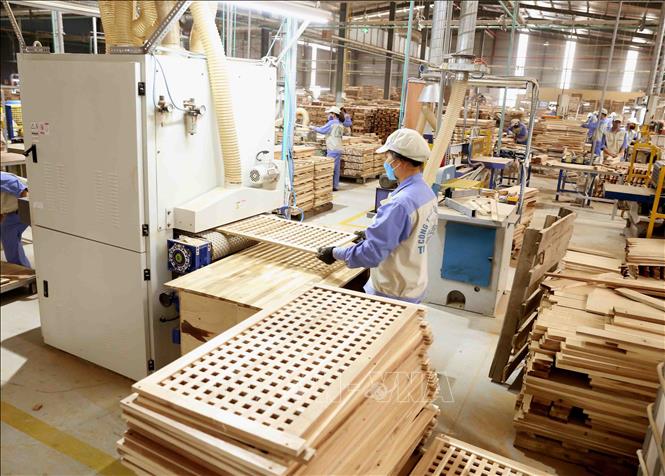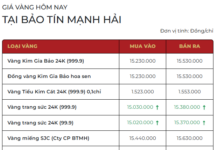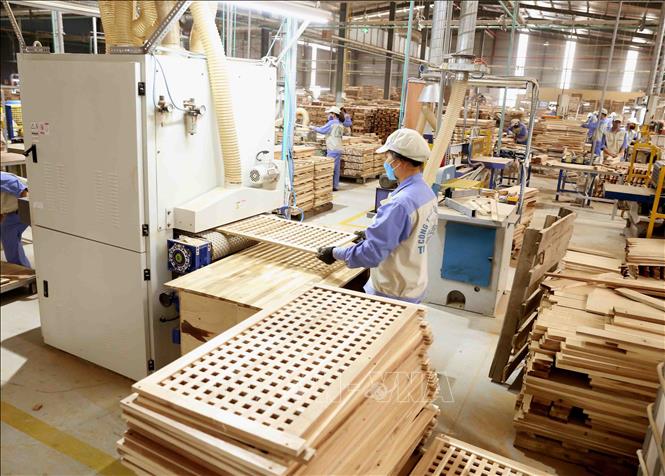
Manufacturing of wooden furniture for export to the US market at Trieu Phu Loc Company (Binh Duong). Illustration photo: VNA
Despite a 20.5% year-on-year increase in export turnover, the Vietnamese wood industry continues to face significant challenges.
The wood and forestry sector in Vietnam has witnessed positive results in the first seven months of 2024, with export turnover reaching US$9.36 billion, accounting for 61.5% of the annual plan. However, achieving the target of $15.2 billion in exports for the year remains challenging due to global economic fluctuations and escalating political conflicts. Additionally, rising sea freight costs and delayed tax refunds further burden the industry.
Nevertheless, the wood industry shows promising signs, with significant growth in some key export products. Notably, woodchip exports increased by nearly 38%, while wood and wood products exports rose by over 20% compared to the same period last year. This reflects the efforts of associations and businesses in proactively seeking new markets and enhancing the export value of wood and forestry products in the initial months.
Mr. Do Xuan Lap, Chairman of the Vietnam Timber and Forest Product Association (VIFORES), elaborated on the difficulties faced in major markets. The US market, accounting for over 54% of Vietnam’s wood industry exports, has undergone significant trade policy changes. Export enterprises have faced consecutive trade defense cases, including three cases related to the wood industry. Additionally, as the US does not recognize Vietnam as a market economy, export businesses will continue to face discrimination in anti-dumping investigations, impacting costs and profit margins.
In the EU market, the upcoming enforcement of the EU Timber Regulation (EUTR) in December 2024 presents challenges for wood exporters regarding stringent product origin and environmental requirements. Simultaneously, Germany has implemented the Supply Chain Due Diligence Act, mandating additional labor and environmental certifications from exporters, creating obstacles for small and medium-sized enterprises.
The Northeast Asian market, including South Korea and Japan, has also introduced new measures that increase costs and risks for exporting businesses. South Korea decided to continue imposing anti-dumping duties on Vietnam’s plywood, while Japan is implementing a carbon credit system with strict emission regulations for wood products.
Amid these challenges, Mr. Lap suggested that the Vietnamese wood industry’s immediate and long-term solution should focus on enhancing enterprises’ competitiveness based on five main pillars: technology, production techniques, emission reduction, governance (digital transformation), trade promotion, and internal supervision standard development.
The wood industry has also proposed and coordinated with ministries and sectors to support businesses in responding to trade investigations from the US, updating policy information from key export markets, suggesting enhanced trade promotion and fire protection support for wood processing factories, and managing specialized fairs and building international-standard fairs.
Additionally, the industry emphasizes the crucial aspect of sustainable development, along with wood origin management and sustainable forest certification development. Regulating logistics to reduce transportation costs and guiding businesses in achieving the Net Zero commitment by 2050 and emission reduction are also priorities.
According to Mr. Trieu Van Luc, Deputy Director of the Department of Forestry, under the Ministry of Agriculture and Rural Development, the key tasks and solutions for the last months of 2024 include continuing to improve and effectively implement issued policies, attracting economic sectors to participate in developing planted forests, wood processing, and forestry product development. Furthermore, strengthening propaganda, organizing exhibitions, investment promotion to introduce products, seeking and expanding consumption markets for wood and forestry products, and closely monitoring and promptly grasping difficulties and problems in mechanisms and policies to remove obstacles for wood processing and exporting enterprises are essential.
Mr. Luc also emphasized the importance of preventing commercial fraud by some exporting enterprises and developing scenarios for directing the import and export of wood and forestry products to ensure the achievement of the 2024 export plan. Replicating successful linkage models between wood processing enterprises and forest-growing households will not only ensure the legality of wood origin but also contribute to increasing added value, reducing production costs, and improving the competitiveness of Vietnam’s wood industry.
Trade promotion conferences, investment promotion conferences, and product introduction exhibitions will continue to be held to maintain and develop Vietnam’s traditional forest product export markets and expand exports to new potential markets such as the Middle East, India, South America, and continue to pay attention to developing the domestic market.
Export of agricultural, forestry, and aquatic products increases by over 79%
According to the Ministry of Agriculture and Rural Development, in January 2024, the total export turnover of agriculture, forestry, and fisheries reached $5.14 billion, a 79.2% increase compared to the same period last year; while the import value was $3.72 billion. Therefore, the agriculture, forestry, and fisheries sector achieved a trade surplus of over $1.4 billion in the first month of 2024, a more than 4.6-fold increase compared to the same period last year.






































